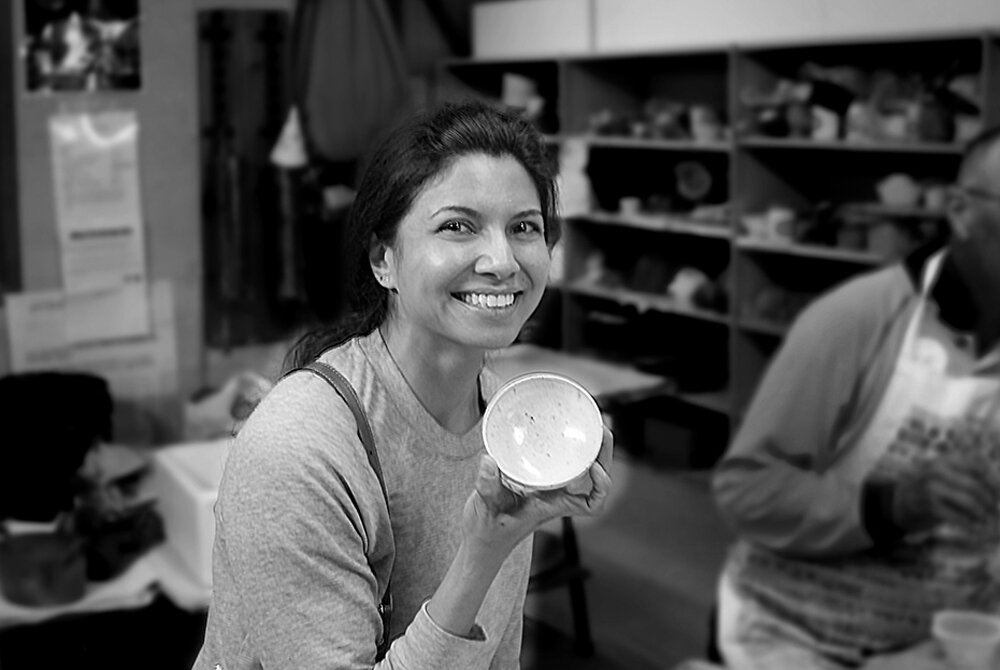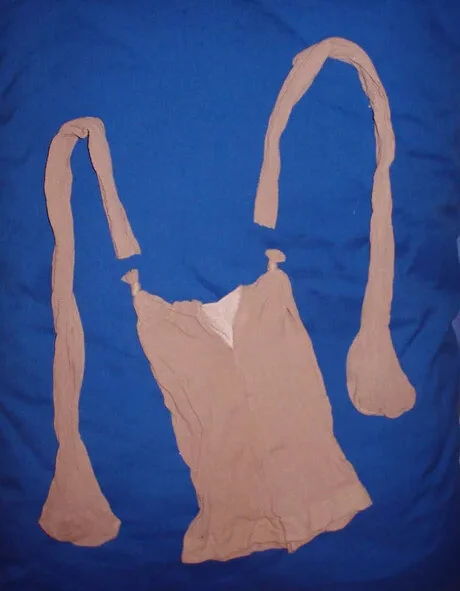
tips
Type in a keyword for what you would like to find :
Button texture stamps
Here’s a clever idea to decorate your work. Make a collection of texture stamps from buttons glued onto the ends of corks. That way they can be stamped repeatedly as the cork makes them easy to handle.
Texturing Tool for Hand Building
Texturing clay edges prior to joining can be a time-consuming job but not with this little invention. Buy a small rubber furniture castor from your local hardware shop (make sure it is rubber and not plastic) and insert wire staples, evenly around the wheel so it creates a tread.
Smooth Rounded Rims
This is a smoothing tool that money can’t buy - a plastic bag or plastic wrap folded in half to make a super finishing tool for wet thrown rims. The folded edge bent over the rim, rounds and smooths the edge in a few revolutions of the wheel.
How to Throw Taller Pots
Use a Strong Point of Contact: Some potters prefer to throw with their fingertips when they throw smaller pots like mugs or cups. They get a better feel of the wall thickness that way.
High Fashion Sieves?
Stockings of assorted ‘gauges’ are flexible, washable (or cheap enough to throw away) and fine or coarse enough for most clay and glaze sieving needs. Tie knots at the top of the legs, then cut the legs off. The pantyhose section will also fit over a bucket for larger sieve batches.
How to Splatter Glaze
This image is a link to a youtube video. When you click it a new window or tab will open and display the video in your internet browser. If you find it useful, a good tip is to bookmark the video, so that you can find it again easily.
Glaze Painting Tips…
Preparation : Before you begin painting, take a sponge and make it slightly damp with clean water. Wipe off your pottery to remove large dust particles. Be sure that your pottery does not get too wet.
Turning Bases
Place a plastic bottle top on a wet or thin pot to provide protection for the base whilst turning. The width of the bottle top spreads the pressure over a wider area and lessens the possibility of the base giving way, or warping under finger pressure.
Cheap but Effective Glaze
All eyes were on one of the firings during this month as pieces experimented with the soda ash and hot water glazing technique as described by Jackie Gasson during the recent hand building workshop.
How Does Vinegar Bind Clay?
To create a join in your clay construction that is stronger than water or slip alone – try using white vinegar. Since clay is slightly alkaline, the acidity of vinegar makes it act like a glue for clay.
5 Ways You Can Help Stop Your Pottery Cracking
Make sure when you start that the clay you use is the same degree of wetness. One of the major causes of cracks is different degrees of wetness when constructing the piece.
Slab Rolling Tip
If you don’t have access to a slab roller, a good way to ensure your slab is even, is to lie two pieces of timber along each side of where you are rolling.
DIY Banding Wheel
This homemade turntable is easy to make, inexpensive, and works really well. PVC plumbing closet flanges can be purchased at many hardware stores for about $10.
4 Ways to Prevent Your Pieces Exploding in the Kiln
1. ‘Air dry’ pieces for as long as possible.
As Brisbane is a humid climate it can take weeks for greenware (freshly made clay pieces) to really dry out, ready for firing. So, how can you know if your piece still has too much moisture inside?
Use wire racks to dry clay slabs and tiles
Use wire racks to dry clay slabs and tiles
Slabs and tiles are especially prone to warping and cracking because they usually have only one long surface exposed to the air, causing the slab to dry unevenly.
















